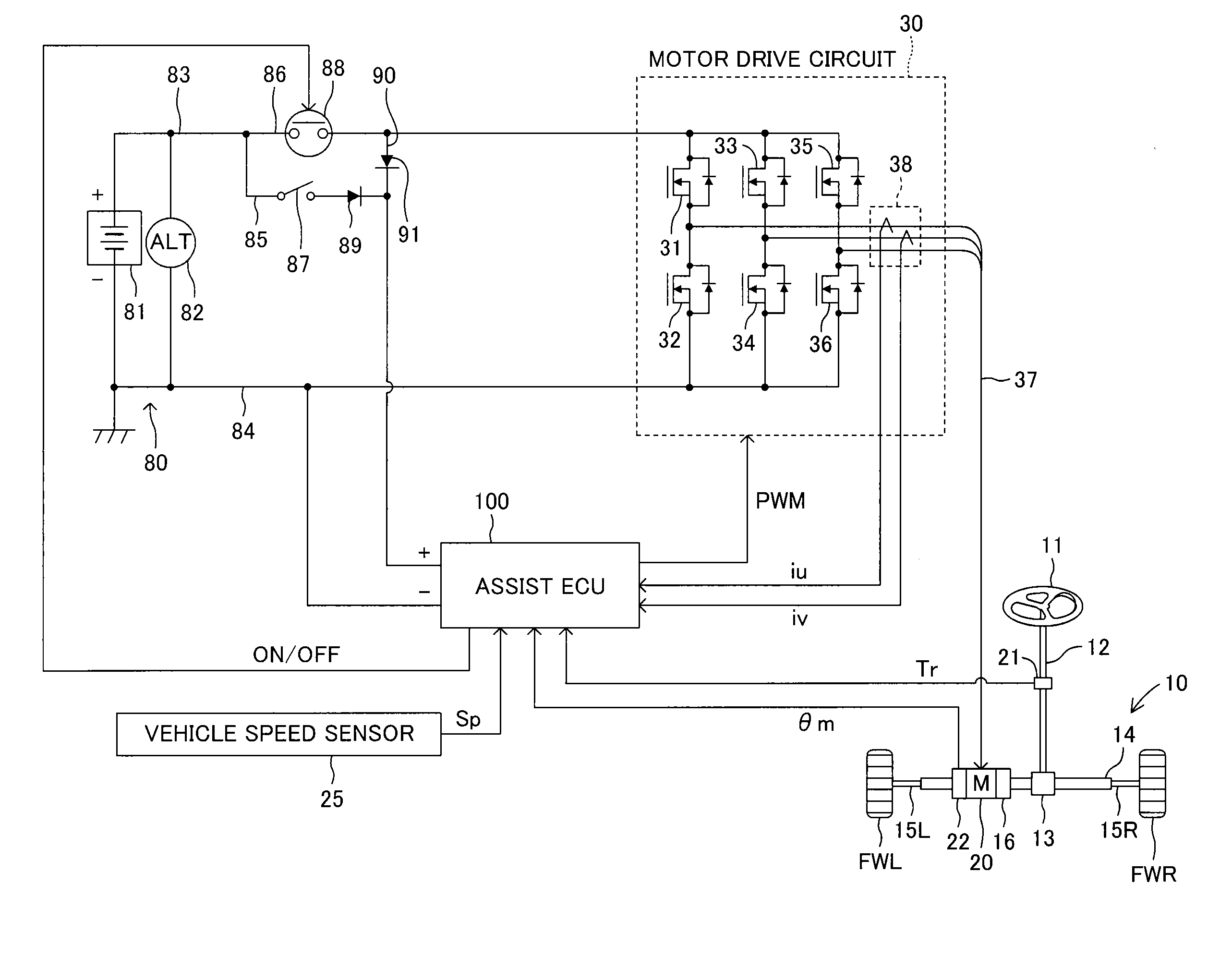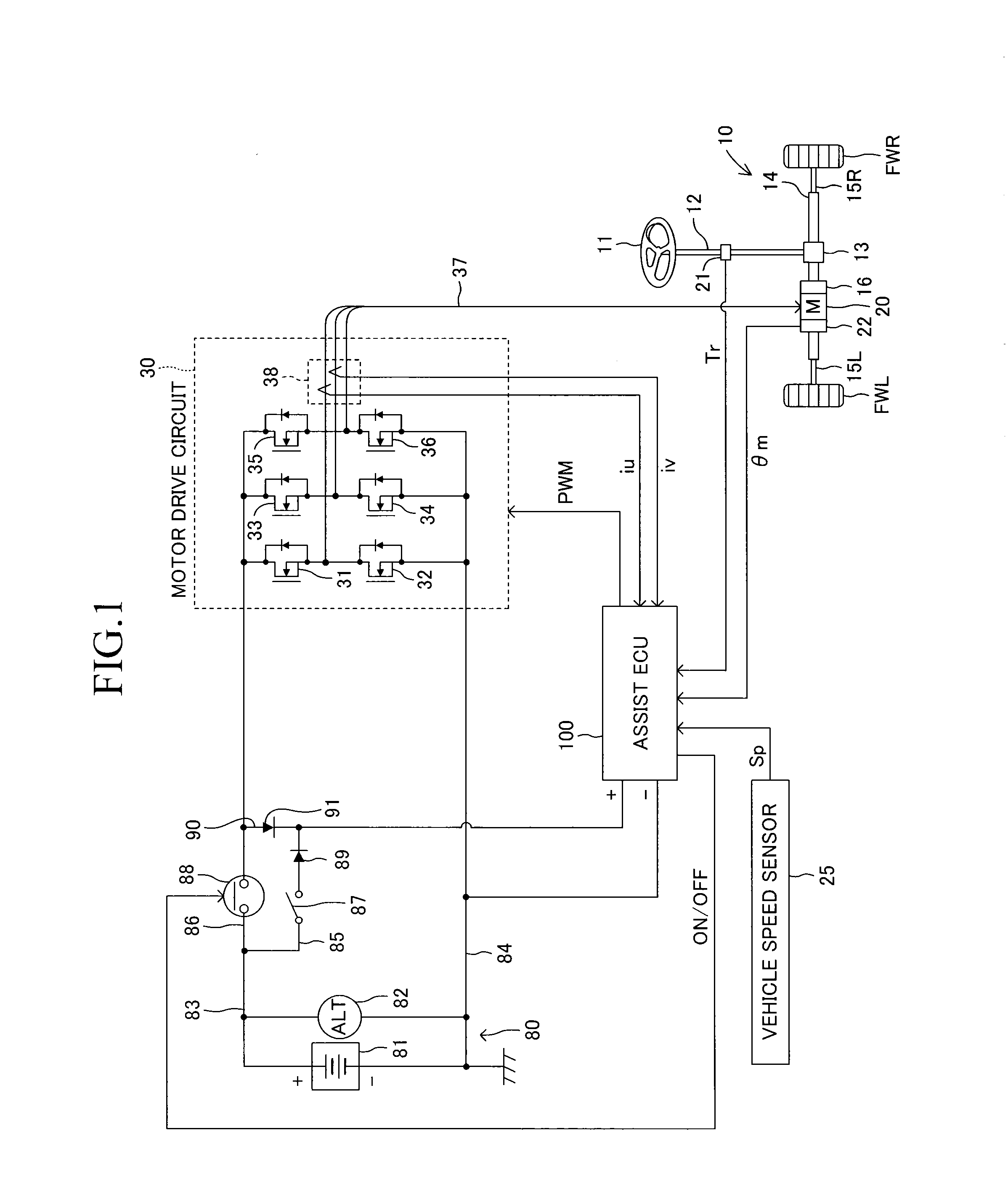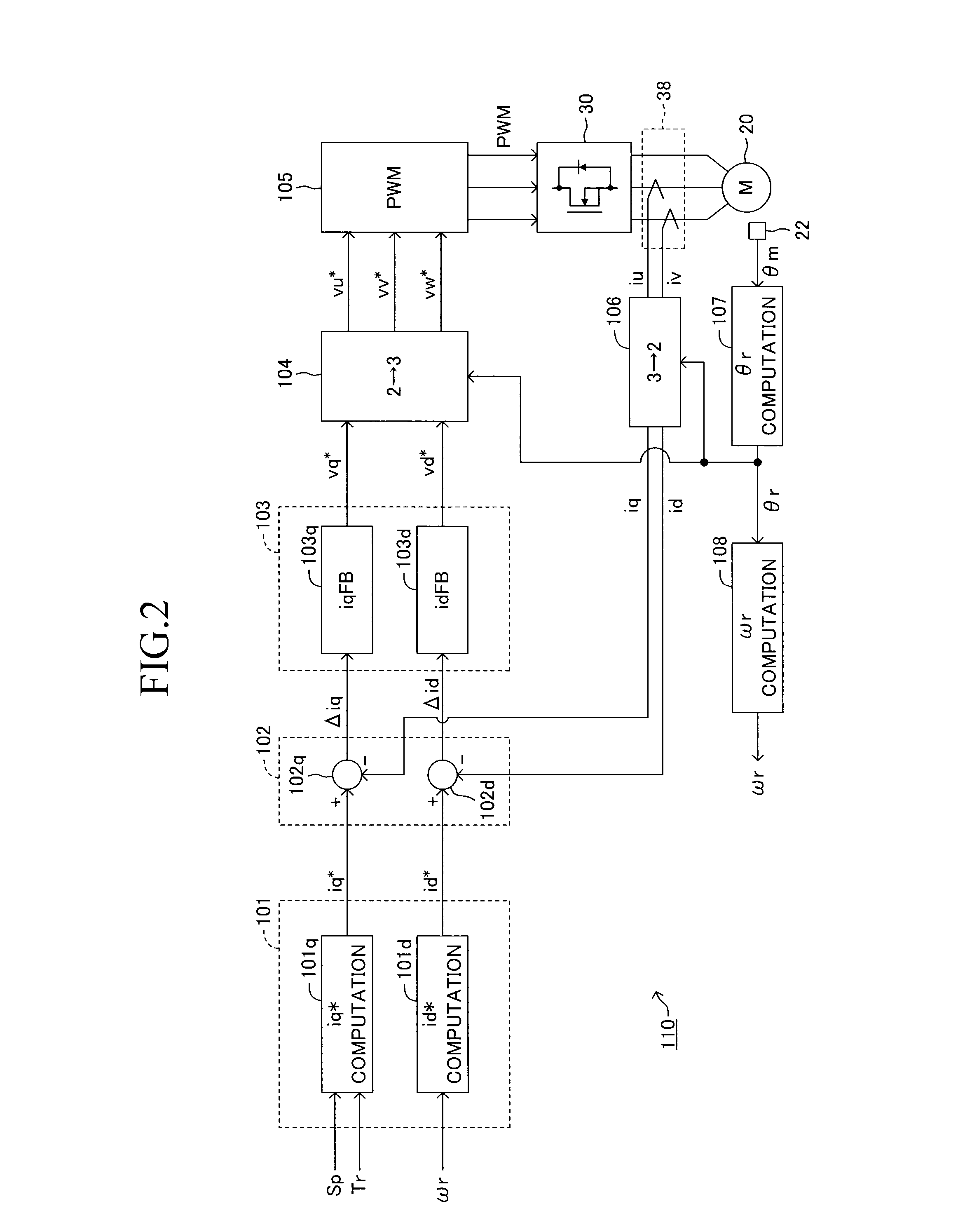Electric power steering system
a technology of electric power steering and steering wheel, which is applied in the direction of steering initiation, dynamo-electric converter control, dynamo-electric gear control, etc., can solve the problems of motor not being able to generate proper torque, motor not being able to generate large torque, problem cannot be avoided, etc., to prolong the braking period for restraining the rotation of the steering wheel, the effect of high speed rotation sta
- Summary
- Abstract
- Description
- Claims
- Application Information
AI Technical Summary
Benefits of technology
Problems solved by technology
Method used
Image
Examples
second embodiment
[0193]First, control mode changeover will be described. FIG. 20 shows a mode changeover control routine of the The mode changeover control routine is stored, as a control program, in the ROM of the microcomputer of the assist ECU 100, and is repeatedly executed at predetermined intervals when the ignition key is held at the ON position.
[0194]Upon starting the mode changeover control routine, in step S21, the assist ECU 100 determines whether or not the rotational speed |ωr| is greater than the second threshold ωth2. This second threshold ωth2 is a fixed value which is set such that it is greater than the first threshold ωth1.
[0195]In the case where the rotational speed |ωr| is equal to or less than the second threshold ωth2 (S21: No), the assist ECU 100 performs the processing of steps S22 and S23, which is similar to that of the steps S11 and S12 of the first embodiment. Specifically, in step S22, the assist ECU 100 computes the rotational acceleration A of the motor 20; and, in s...
first embodiment
[0207]The voltage phase instruction value θc computed by the addition section 202 is output to the PWM signal generation section 203. The PWM signal generation section 203 generates, in accordance with the voltage phase instruction value θc, PWM control signals which are set such that the output voltages of the motor drive circuit 30 become the sinusoidal wave voltages expressed by the following expression (17), and outputs the PWM control signals to the switching elements 31 to 36. In this case, the amplitude V of each sinusoidal wave voltage is also determined from the voltage limit value of the motor drive circuit 30 as in the case of the
{Vu=Vsin(θmap+θr)Vv=Vsin(θmap+θr-2π3)Vw=Vsin(θmap+θr-4π3)(17)
[0208]The switching elements 31 to 36 operate in response to the PWM control signals output from the PWM signal generation section 203. Thus, the motor drive circuit 30 outputs three-phase sinusoidal wave voltages.
[0209]In the case of the electric power steering apparatus of the second ...
PUM
 Login to View More
Login to View More Abstract
Description
Claims
Application Information
 Login to View More
Login to View More - R&D
- Intellectual Property
- Life Sciences
- Materials
- Tech Scout
- Unparalleled Data Quality
- Higher Quality Content
- 60% Fewer Hallucinations
Browse by: Latest US Patents, China's latest patents, Technical Efficacy Thesaurus, Application Domain, Technology Topic, Popular Technical Reports.
© 2025 PatSnap. All rights reserved.Legal|Privacy policy|Modern Slavery Act Transparency Statement|Sitemap|About US| Contact US: help@patsnap.com



